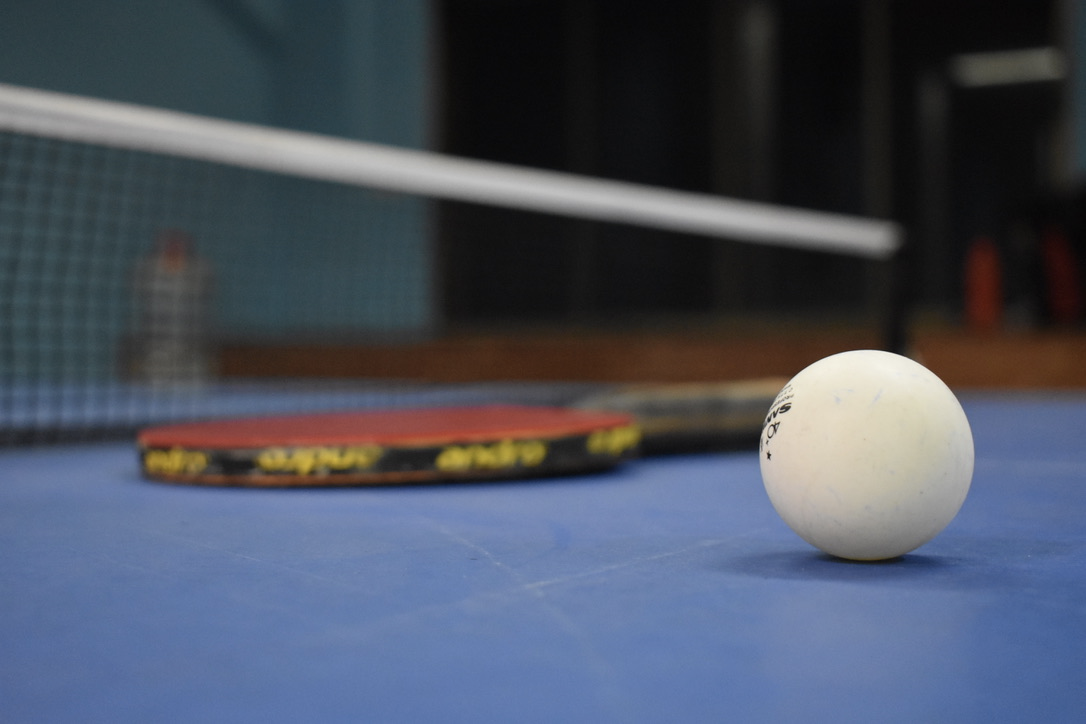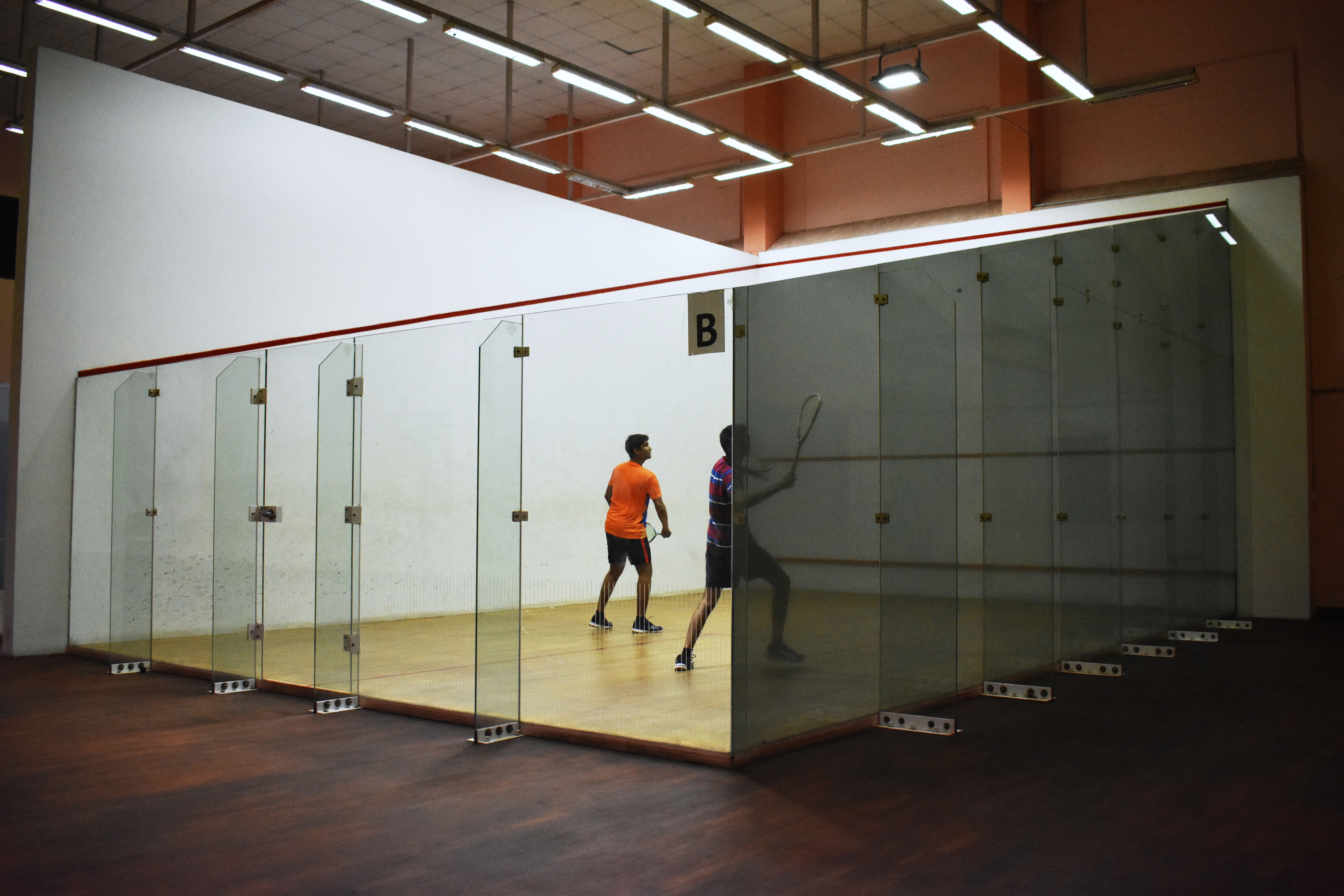My day usually ends around 5.
I trudge back to my hostel room, weary from the day’s work. I crash-land on my bed, leaving my bag on the floor. Every day is a long day. I stare at the wall as my thoughts walk me through the events of the day. The bad and the good things, I see them all. Again. Then, I start thinking of work I am yet to do, the assignments, the PoR deadlines; but oh I’m so tired! By now, I’m devoid of mental energy to go ahead with anything I’m supposed to be doing. This is it, I think, as my brain starts drifting away. Somewhere between these lines, my phone chimes in.
You know exactly what can get you going! Chop-chop!
I groan. I can’t believe I talked myself into setting uplifting reminders. I push myself off my bed with all the willpower I can muster and pack. As I ride my cycle to the TT courts at Gymkhana, I think about all the people that would be there, and I shudder. You see, I’m not very fond of social interactions. But then again, I love meeting new people. I know. I’m a walking contradiction.
I brace myself as I walk through the door, even though it’s one of my favourite places in insti.

For newcomers, the first sight might be a little intense. Six professional looking tables span the court, which is divided in half by blue colored movable barriers. You’d see very serious looking people playing against each other, some tables more crowded than the others, unused sports shoes at the edge of the court, and bags strewn across the seating area. But no need to be intimidated, really. Everyone is just extremely focused on their game, or resting and strategising, or yelling ‘coz they stepped on and crushed their own ball.
The institute court is painted with a cool blue color. The seating area is two steps of smooth ceramic, with large grilled windows at the edge of the top step, to sit and dry yourself in the cool breeze. We do have ceiling fans, but they are rarely switched on, else the table tennis ball would get affected by air currents. Sometimes we end up closing the windows too.
I put my bag down in my usual spot, somewhere in the middle of the seating area. I pick a place where I would have a good view of all the tables when I sit down to rest. Watching other people play, I mentally compare each of their movements to my own, or I just dream of how I would play against them. I say dream because how it plays out in my mind differs drastically from how I would play in real life. That’s the beauty of sports; tables can turn at any point in the match.
I do a few stretches to get my blood flowing in my arms and legs and scout for a table where I could get the right kind of practice.
When I’m at the table, everything else fades away. I am aware of the ball coming towards me. All I have is seconds to judge my opponents play on the ball and a split second to hit it in just the right way, at just the right time. A moment later, and the opportunity is lost. It’s poetic in a way.I am at peace and at war at the same time.
As sports persons who play to win, we’re told to think of ourselves as the player that we admire the most. I like to do that too. I think of myself to be at the top of my game, with a sound judgement of gameplay and great racquet sense. This doesn’t magically bestow any of these qualities upon me, but it does give me the confidence to take on a tough opponent.

I think table tennis has one of the most graceful movements in racquet sports. Don’t be deceived by the grace though; each movement is well practiced and carefully calculated.
Take the service, for example. The movement of the racquet in a particular direction can create forward, backward, or side spin. Each spin has a specific way in which it has to be received, else the ball would fly right off the table. Generally, you should be able to gauge the spin of the ball and receive it in the right way- unless, of course – your opponent visually deceived you. It is only after careful judgement of the spin of the ball when it first lands on the opponent’s side that you should decide your stroke and play. Serves are my personal favourite. I pride myself in my ability to deceive an opponent with my serves. I think it is the best way to gain an instant point in the match, and the rush of confidence is an added bonus. It is a little difficult to receive serves that are fast, because you’ll have to be quick and accurate in judging the ball. If you’re skilled enough to do a good serve and receive it, you have incredible chances of winning the match.

But the game doesn’t end there. Far from it. You should never assume that the opponent can’t pick your serve.
This also stands for any other stroke that you play during the match. It’s as much a game of the mind as it is of the body. Overconfidence is poison. Sustaining the match after the serve is just as important. Being vigilant of the ball, gauging the opponent’s weakness and being mindful of their strong suits, all this has to be done simultaneously if the point is to be won. Hitting the ball fast may not always help with your chances of winning. Why? If your opponent blocks the ball, that will send it back to you with even greater speed, and it will veer out of your control. It’s in your best interests to hit the ball with more spin than speed.

A point is usually won by a well placed, decently fast, spinny ball. Adding spin to the ball makes it change its direction when it hits the opponent’s side, catching them off-guard if they’re not observant.
One stroke I would love to learn is the flick. It involves twisting of the wrist to give the ball more contact time with the racquet, so you could enforce your spin on it. It is essentially a finishing stroke. The ball moves with spin as well as speed and the point is lost before you realize where the ball went. It’s almost impossible to block when played if you get a short ball at your side of the table. A short ball falls close to the net as opposed to a long ball which lands close to the edge of the table. Both, the flick and the spin strokes, can be played using the forehand and the backhand of the racquet. For me, the backhand strokes are a little difficult to pull off because of the way I normally hold the racquet.
There are two basic ways to grip the TT racquet: the penhold grip and shake hand grip. They are exactly what they sound like.

Most players use the shake hand grip because it is easier and is widely recommended for beginners. To use backhand spin and flick, I need to twist my wrist more because the freedom of movement of racquet is less compared to the pen hold grip. I have only ever seen international players use the pen hold grip. My friends and I are only capable of goofing around with it sometimes!

The TT racquet has rubbers on both of its sides. The rubber is chosen in such a way to enhance the player’s ability and help them with their weaknesses. My racquet has smooth rubber on both sides. Some players have pimpled rubbers. Playing against these guys is a completely different ballgame; I have had to change my entire game strategy during the course of the match!
This makes the game come alive for me, thinking on my feet and adapting to the situation at hand. Whether I’m winning or losing the match, the rest of the game depends on how I let my state affect me psychologically.
Having played table tennis before joining IITM, the court wasn’t completely unfamiliar to me when I set foot in it for the first time.This year, I was a probable for the insti team. Even though I gave it everything I had, all of my time, energy and patience, I could not make it to the team. It was heartbreaking for me. I knew how much I had practised. I was also afraid that, having failed after putting in so much effort, I might never go back to it. But, if anything, my admiration and love for it has increased manifold. You can find me there everyday, especially if I have had a bad day. I realised it is the best way to help me unwind. Now, after being intensely involved in it, my day is incomplete if I skip it.
In a way, I am glad I didn’t make it to the team. It made me realise how important it has become to me, and even if I think I have done everything I could, there is always room for improvement.





Wow! Extremely well expressed and love the sport person, coming out in words and taking us through the journey.
The precise ness and the descriptive nature of the article transports the reader to a different zone. Seeing the game through your eyes!
Keep up the good work beta!!
So brilliantly penned down. Your expertise with the language and your passion with game provide a perfect blendto the write-up. Way to go girl!
Amazingly well articulated, with just the right mix of humour and technical details that entices the reader to continue to look for more , even after the end of the article! Well done Vani, and keep it up!
Extremely engrossing article. Very well written. Wish you great success in your endeavors!
Beautifully expressed ! The love for the sport and the perfectly expressed thoughts makes it a very engaging article . Keep writing ! You rock !
Amazing Narrative with finesse in details. I don’t know much about TT and it has been never my cup of tea but gradually reading your words I’m falling in love with the game. Looks as if we are in the ground watching the game play. Beta I salute your observation in the last which shows what a strong fighter you are. Look not for success or failures be in the midst of action and madness of the world try to ground your foot on earth. Once you have grounded no power on earth can move you. I’m seeing our little princess Adriza gradually gripping into her roots and I could visualise your success in years to come. Will eagerly await your next piece. Love and blessings beta. You just rock…
Really enjoyed the write up. I used to play at Med school and was ladies and mixed doubles champion for our batch. We have a table in our garage too and play with kids often. Do keep writing and playing